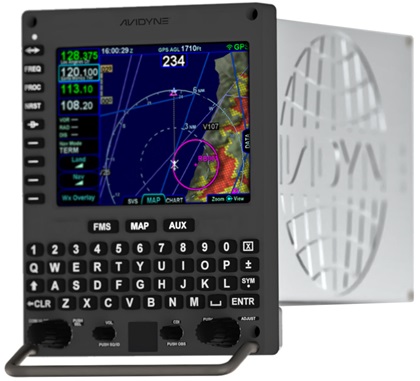FAA approves Avidyne helicopter FMS
TSO for Helios
Avidyne announced technical standard order (TSO) approval that will allow maintenance facilities to request supplemental type certificates or field approvals for the Helios multifunction flight management system installation in corporate, military, and special mission helicopters. Helios is designed to work with legacy instruments and replace legacy helicopter navigation and flight management systems.
Helios was announced in January 2020 and designed with turbine rotorcraft in mind. Avidyne Corp. CEO Dan Schwinn noted at the time that while Helios and Atlas, a dzus-mounted multifunction FMS made for turbine airplanes, share many features and functions, they are not the same. Helios, he noted, was “built from the ground up to meet the rigorous demands of the rotorcraft environment.”
Avidyne built its business around modern avionics made to replace older models with minimal fuss, and Helios is no exception, designed to integrate with a direct interface to many popular electronic flight information systems made by Honeywell and Collins Aerospace, and build on their capabilities. For example, with EFISs certified before localizer performance with vertical guidance (LPV) approaches were available, Helios can facilitate coupled approach guidance on these and other satellite-based augmentation system (SBAS) approaches, Avidyne noted in a news release.

Many features not found in rival FMS, according to Avidyne, include the hybrid touch-screen interface, a moving map with many display options, including weather and traffic overlays, and integration with ForeFlight and other popular electronic flight bag apps. Helios supports required navigation performance (RNP) and area navigation (RNAV) capabilities, lateral navigation/vertical navigation (LNAV/VNAV), LNAV-only, and approach procedures with vertical (APV) approach modes.
The base price ($23,999) has not changed since the product was first announced, and an optional, integrated 16-watt VHF nav/com/ILS radio brings the price to $29,999. Helios is 7.5 inches tall, 5.75 inches wide, and 10.615 inches deep, sized to fit neatly in the space vacated by a legacy FMS.
“Avidyne Helios gives our customers a powerful new option when upgrading their GPS/FMS navigation capabilities, especially for single- and twin-turbine-class helicopter operators with older-generation EFIS displays where options have been limited,” said John Talmadge, Avidyne’s vice president of worldwide sales, in the May 18 news release. “This TSO approval allows MRO facilities to begin their own Supplemental Type Certificates (STC) programs and field-approved installations into rotor-wing aircraft.”



